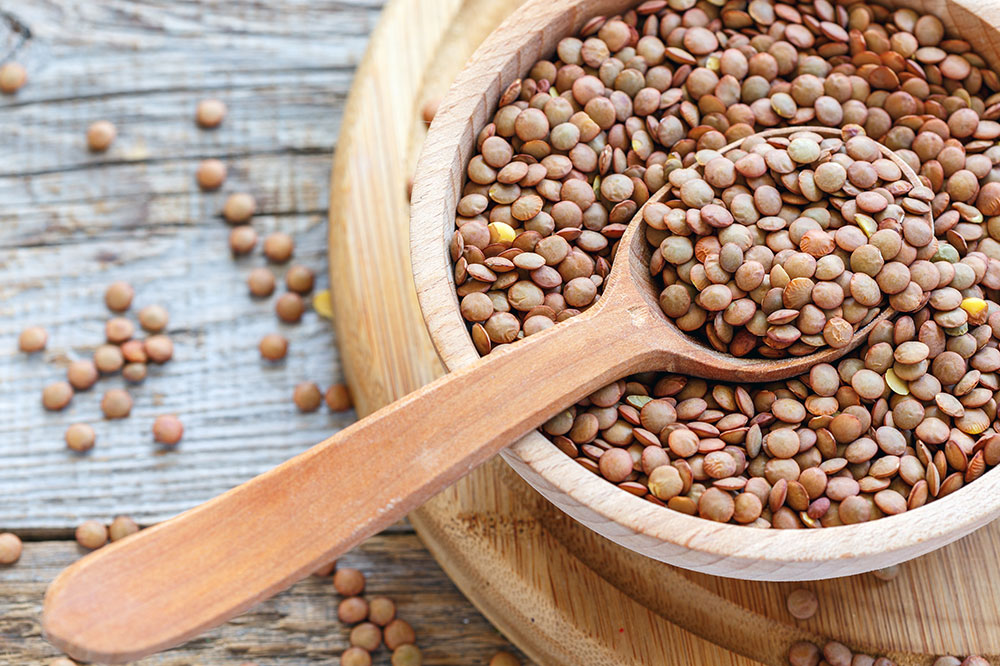4 foods that help fight bladder-control issues

The bladder helps with the storage and disposal of urine. But with time, factors like age and underlying health conditions cause the bladder to perform inefficiently. Leaving the urinary system untreated can cause health conditions such as an overactive bladder (OAB), urinary incontinence, even urinary tract infection (UTI). And although incontinence products and treatments options are available, adding certain foods to your daily meals may help cope with bladder issues and improve overall health.
These four foods are highly recommended for those suffering from an overactive bladder.
Bananas
When bowel movements are restricted, there’s an increase in pressure on the urinary tract. This pressure reduces urine flow and causes incontinence. The fibers and potassium in bananas promote healthy bowel movements and flush out the urinary tract. The fruit is also non-acidic, which means it does not irritate the bladder and makes for a balanced nutrient supply to the body.
Pears
Pears may taste sweet but they are low in sugar content and contain several antioxidants and fibers that are much required for the body. This fruit is also high in sorbitol, which a sugar alcohol that help pulls water into the intestines and stimulates better bowel movements. These properties make for pears a great fruit for dealing with OAB and improving bowel movements.
Kiwi
The high fiber content in kiwi makes it an effective food for dealing with unhealthy, restricted bladders. Studies show that thos fruit stimulates the digestive tract and accelerates bowel movements. Kiwis are also praised for their ability to boost intestinal transit time, ward off constipation symptoms, and help reduce the use of laxatives.
Beans
Among foods that help cope with OAB, beans rank among the top owing to high fiber content. This food is also rich in soluble fibers that are known to absorb water and form a gel-like structure that softens stool and makes bowel movements easier. Beans also contain insoluble fibers that pass through the digestive tract and bulk up a stool to improve bladder movements.
Apart from these foods, you can try a variety of others for improving bowel movements, reducing bladder problems, and ultimately having a healthier lifestyle. These foods include include rhubarb, artichokes, figs, sweet potatoes, lentils, kefir, flax seeds, apples.
If foods don’t provide relief from OAB, you may consider taking medications. Here are two medications for overactive bladder:
MYRBETRIQ
MYRBETRIQ (mirabegron) is an FDA-approved medication used to treat OAB in adults with symptoms of urgency, frequency, and leakage. The medication helps relax the muscle surrounding the bladder and allows the bladder to hold more urine, thus providing relief from various symptoms. Sometimes, it is used in combination with other medicines to effectively treat overactive bladder. MYRBETRIQ is an oral medication that is typically taken once per day.
Vibegron
Vibegron, popularly sold under the brand name GEMTESA, is another FDA-approved medication for the treatment of overactive bladder. Doctors usually prescribe the medication to adults exhibiting symptoms like urinary incontinence, urgency, and urinary frequency. Vibegron is a beta-3 adrenergic receptor agonist that works by relaxing the bladder muscles to prevent urgent, frequent, or uncontrolled urination. The medication can be orally taken once a day.
Endometriosis and the bladder
Endometriosis affecting the bladder can be rare. But when this happens, one can experience some discomforting symptoms. A person may experience bladder irritation, pain when the bladder is full, occasional blood in the urine, and loin pain. The symptoms can be managed with a combination of painkillers and hormonal treatments. To diagnose the severity of the condition, the doctor may use various techniques like vaginal examination, ultrasound of urine samples, cystoscopy, and a laparoscopy.
TOVIAZ
TOVIAZ is an FDA-approved overactive bladder oral treatment option. It helps keep the bladder from frequently squeezing, controlling the sudden urge to urinate. In addition, it relaxes the bladder muscles, decreases the frequency of urination, and prevents involuntary leaks. Individuals undergoing treatment for other health conditions and pregnant women must consult a doctor before using overactive bladder treatment options like TOVIAZ.
COSELA™
It is an intravenous treatment plan whose trials have been run to deduce its effect on bladder cancer. COSELA™ is expected to be a new treatment option for patients with metastatic urothelial carcinoma. The results of the clinical trial are expected to be released by the end of December. Furthermore, it is a tumor-agnostic treatment that has been approved by the FDA for the treatment of small-cell lung cancer.